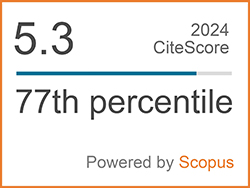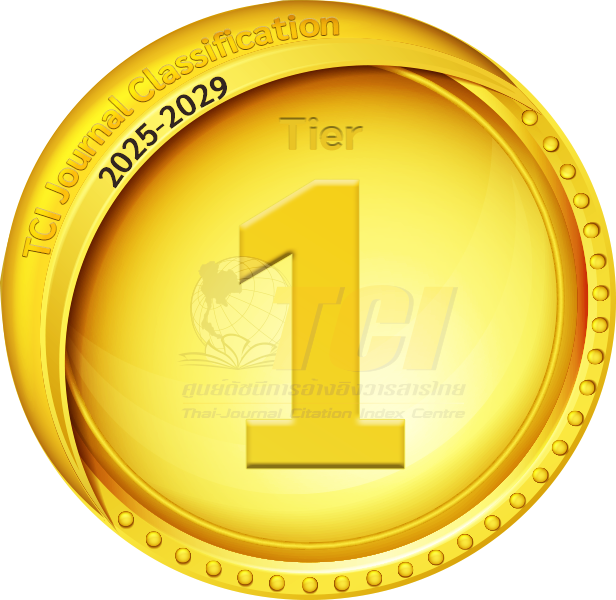Custom-Built Earth-Based Hypergravity Platform to Study Gravity and Light Tropisms on Soil-Grown Seedlings
Abstract
Keywords
[1] G. Pozhvanov and D. Suslov, “Sucrose and mannans affect arabidopsis shoot gravitropism at the cell wall level,” Plants, vol. 13, no. 2, 2024, doi: 10.3390/plants13020209.
[2] X. Xia, X. Mi, L. Jin, R. Guo, J. Zhu, H. Xie, L. Liu, Y. An, C. Zhang, C. Wei, and S. Liu, “CsLAZY1 mediates shoot gravitropism and branch angle in tea plants (Camellia sinensis),” BMC Plant Biology, vol. 21, no. 1, 2021, doi: 10.1186/s12870-021-03044-z.
[3] K. Retzer and W. Weckwerth, “Recent insights into metabolic and signalling events of directional root growth regulation and its implications for sustainable crop production systems,” Frontiers in Plant Science, vol. 14, pp. 249–256, 2023, Art. no. 1154088, doi: 10.3389/fpls.2023.1154088.
[4] S. Harmer and C. Brooks, “Growth-mediated plant movements: Hidden in plain sight,” Current Opinion in Plant Biology, vol. 41, pp. 89–94, 2018, doi: 10.1016/j.pbi.2017.10.003.
[5] H. Han, M. Adamowski, L. Qi, S. S. Alotaibi, and J. Friml, “PIN-mediated polar auxin transport regulations in plant tropic responses,” New Phytologist, vol. 232, no. 2, pp. 510–522, 2021, doi: 10.1111/nph.17617.
[6] K. Hamann, M. Meier, N. Lewis, and A. Carim, “Plastic morphological response to spectral shifts during inorganic phototropic growth,” JACS Au, vol. 2, no. 4, pp. 865–874, 2022, doi: 10.3732/ajb.
[7] X. Qian, Y. Zhao, Y. Alsaid, X. Wang, M. Hua, T. Galy, H. Gopalakrishna, Y. Yang, J. Cui, N. Liu, M. Marszewski, L. Pilon, H. Jiang, and X. He, “Artificial phototropism for omnidirectional tracking and harvesting of light,” Nat Nanotechnology, vol. 14, no. 11, pp. 1048–1055, 2019, doi: 10.1038/s41565-019-0562-3.
[8] Y. Zhang, J. Lu, and Y. He, “Long-term partial gravity environment simulation method based on double inclined and horizontal planes cyclical simulation device,” Measurement, vol. 202, 2022, Art. no. 111830, doi: 10.1016/j.measurement. 2022.111830.
[9] L. E. Romano, J. J. W. A. van Loon, L. G. Izzo, M. Iovane, and G. Aronne, “Effects of altered gravity on growth and morphology in Wolffia globosa implications for bioregenerative life support systems and space-based agriculture,” Scientific Reports, vol. 14, no. 410, 2024, doi: 10.1038/s41598-023-49680-3.
[10] V. D. Micco, G. Aronne, N. Caplin, E. Carnero-Diaz, R. Herranz, N. Horemans, V. Legue, F. J. Medina, V. Pereda-Loth, M. Schiefloe, S. De Francesco, L. G. Izzo, I. Le Disquet, and A. K. Jost, “Perspectives for plant biology in space and analogue environments,” npj Microgravity, vol. 9, no. 67, 2023, doi: 10.1038/s41526-023-00315-x.
[11] R. Hosamani, B. K. Swamy, A. Dsouza, and M. Sathasivam, “Plant responses to hypergravity: A comprehensive review,” Planta, vol. 257, no. 17, 2023, doi: 10.1007/s00425-022-04051-6.
[12] Y. Makino, K. Ichinose, M. Yoshimura, Y. Kawahara, and L. Yuge, “Efficient preservation of sprouting vegetables under simulated microgravity conditions,” PLoS One, vol. 15, no. 10, 2020, doi: 10.1371/journal.pone.0240809.
[13] L. T. Bien, T. T. Hoang, M. Nguyen, T. H. Phong, D. M. Cuong, H. D. Khai, V. M. Luan, N. B. Nam, T. Trinh, B. V. T. Vinh, and N. D. Tan, “Morphogenesis of in vitro strawberry leaf cultured under clinostat 2D condition,” Plant Cell Tissue and Organ Culture, vol. 153, no. 3, pp. 499–510, 2023, doi: 10.1007/s11240-023-02484-9.
[14] M. A. Valbuena, A. Manzano, J. P. Vandenbrink, V. Pereda-Loth, E. Carnero-Diaz, R. E. Edelmann, J. Z. Kiss, R. Herranz, and F. Javier Medina, “The combined effects of real or simulated microgravity and red-light photoactivation on plant root meristematic cells,” Planta, vol. 248, no. 3, pp. 691–704, 2018, doi: 10.1007/s00425-018-2930-x.
[15] Q. S. Wang, M. H. Li, and D. W. Li, “Solitary wave generation and propagation under hypergravity fields,” Water (Switzerland), vol. 10, no. 10, 2018, doi: 10.3390/w10101381.
[16] A. Kume, H. Kamachi, Y. Onoda, Y. Hanba, Y. Hiwatashi, I. Karahara, and T. Fujita, “How plants grow under gravity conditions besides 1 g: Perspectives from hypergravity and space experiments that employ bryophytes as a model organism,” Plant Molecular Biology, vol. 107, pp. 279–291, 2021, doi: 10.1007/s11103-021-01146-8.
[17] S. Brungs, G. Petrat, M. von der Wiesche, R. Anken, W. Kolanus, and R. Hemmersbach, “Simulating parabolic flight like g-profiles on ground - A combination of centrifuge and clinostat,” Microgravity Science and Technology, vol. 28, no. 3, pp. 231–235, 2016, doi: 10.1007/s12217-015-9458-5.
[18] N. de Sous, G. Rodriguez-Esteban, I. Colage, P. D’Ambrosio, J. J. W. A. van Loon, E. Salo, T. Adell, and G. Auletta, “Transcriptomic analysis of planarians under simulated microgravity or 8 g demonstrates that alteration of gravity induces genomic and cellular alterations that could facilitate tumoral transformation,” International Journal of Molecular Sciences, vol. 20, no. 3, 2019, doi: 10.3390/ijms20030720.
[19] T. Frett, G. Petrat, J. J. Jack, R. Hemmersbach, and R. Anken, “Hypergravity facilities in the ESA ground-based facility program – Current research activities and future tasks,” Microgravity Science and Technology, vol. 28, no. 3, pp. 205–214, 2016, doi: 10.1007/s12217-015-9462-9.
[20] J. J. W. A. van Loon, J. Krause, H. Cunha, J. Goncalves, H. Almeida, and P. Schiller, “The large diameter centrifuge, LDC, for life and physical sciences and technology,” in Proceedings of the Life in Space for Life on Earth Symposium, vol. 553, p. 92, 2008.
[21] Dassault Systèmes. SolidWorks 2023. (2023). Accessed: Dec. 12, 2024. [Online]. Available: https://www.solidworks.com
[22] M. J. C. Dionel, M. P. Alaan, J. A. Lato, J. Reyes, J. M. Tan, R. Concepcion II, R. Relano, and A. Bandala, “Optimization of a hypergravity platform design for earth-based astrobotany applications using finite element analysis,” in 2023 IEEE 15th International Conference on Humanoid, Nanotechnology, Information Technology, Communication and Control, Environment, and Management (HNICEM), 2023, doi: 10.1109/HNICEM60674.2023.10589090.
[23] M. J. Dionela, J. M. Tan, L. M. Paran, R. Concepcion II, A. Bandala, and L. G. Izzo, “Design of a hypergravity simulation platform with speed and axis stability control systems,” in 2022 IEEE 14th International Conference on Humanoid, Nanotechnology, Information Technology, Communication and Control, Environment, and Management (HNICEM), 2022, doi: 10.1109/HNICEM57413.2022.10109584.
[24] M. Sathasivam, R. Hosamani, B. K. Swamy, and S. Kumaran, “Plant responses to real and simulated microgravity,” Life Sciences in Space Research, vol. 28, pp. 74–86, 2021, doi: 10.1016/ j.lssr.2020.10.001.
[25] Minitab LLC. Minitab 21. (2023). Accessed: Dec. 12, 2024. [Online]. Available: https://www. minitab.com
[26] C. Wade, “Responses across the gravity continuum: Hypergravity to microgravity,” Advances in Space Biology and Medicine, vol. 10, pp. 225–245, 2005, doi: 10.1016/S1569-2574(05)10009-4.
[27] L. E. Romano, J. J. W. A. van Loon, L. G. Izzo, M. Iovane, and G. Aronne, “Effects of altered gravity on growth and morphology in Wolffia globosa implications for bioregenerative life support systems and space-based agriculture,” Scientific Reports, vol. 14, no. 410, 2024, doi: 10.1038/s41598-023-49680-3.
[28] K. H. Hasenstein and J. J. W. A. van Loon, “Clinostats and other rotating systems-design, function, and limitations,” Generation and Applications of Extra-Terrestrial Environments on Earth, vol. 6, pp. 147–156, 2015.
[29] M. Calvaruso, C. Militello, L. Minafra, V. La Regina, F. Torrisi, G. Pucci, F. P. Cammarata, V. Bravata, G. I. Fote, and G. Russo, “Biological and mechanical characterization of the Random Positioning Machine (RPM) for microgravity simulations,” Life (Basel), vol. 11, no. 11, 2021, doi: 10.3390/life11111190.
[30] M. Toyota and S. Gilroy, “Gravity and mechanical signaling in plants,” American Journal of Botany, vol. 100, no. 1, pp. 111–125 2013, doi: 10.3732/ajb.1200408.
[31] M. Toyota, T. Furuichi, H. Tasumi, and M. Sokabe, “Hypergravity stimulation induces changes in intracellular calcium concentration in Arabidopsis seedlings,” Advances in Space Research, vol. 39, pp. 1190–1197, 2007, doi: 10.1016/j.asr.2006.12.012.
[32] K. Takemur, H. Kamachi, A. Kume, T. Fujita, I. Karahara, and Y. T. Hanba, “A hypergravity environment increases chloroplast size, photosynthesis, and plant growth in the moss Physcomitrella patens,” Journal of Plant Research, vol. 130, pp. 181–192, 2017, doi: 10.1007/s10265-016-0879-z.DOI: 10.14416/j.asep.2025.05.003
Refbacks
- There are currently no refbacks.
 Applied Science and Engineering Progress
Applied Science and Engineering Progress







